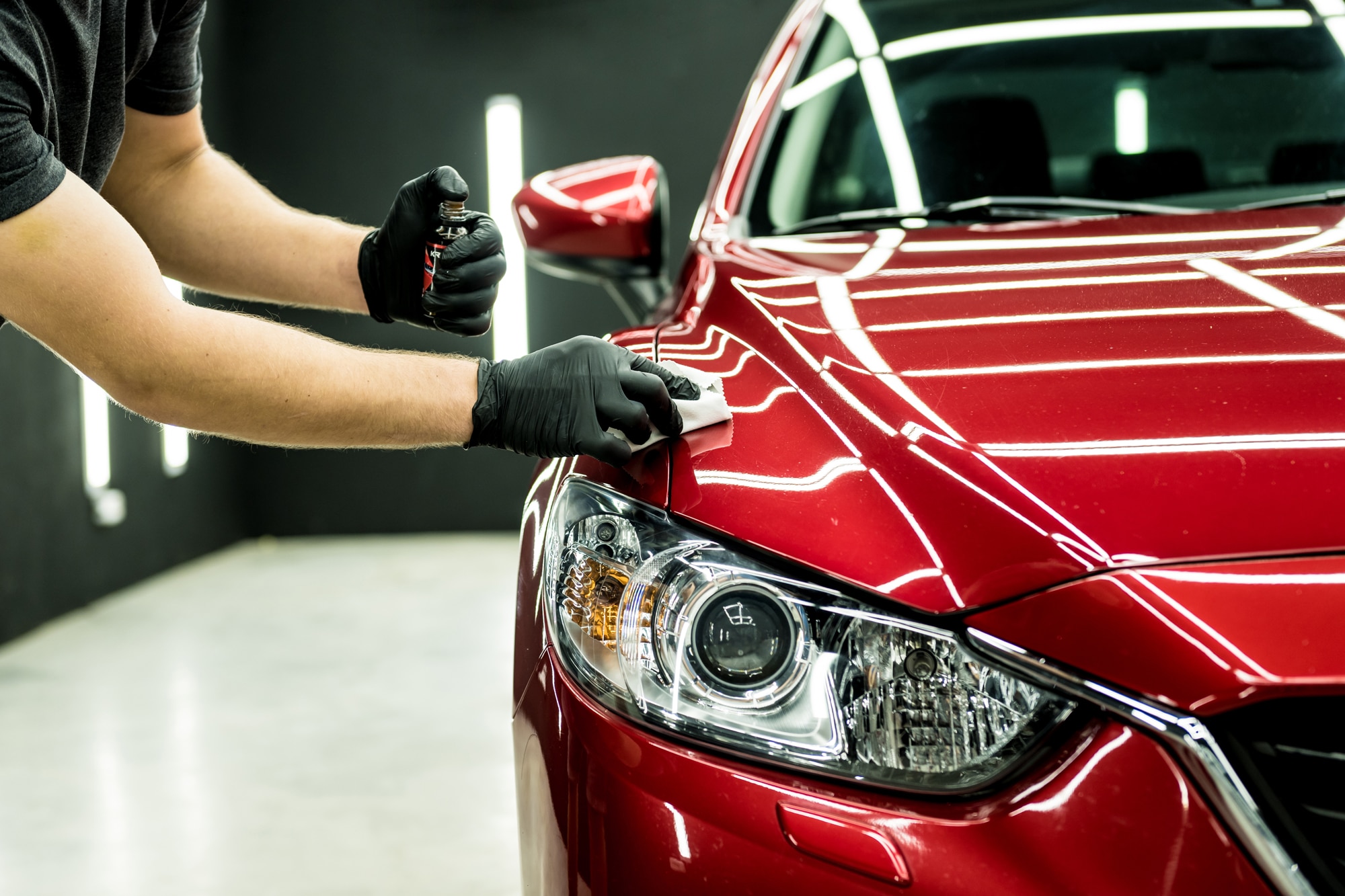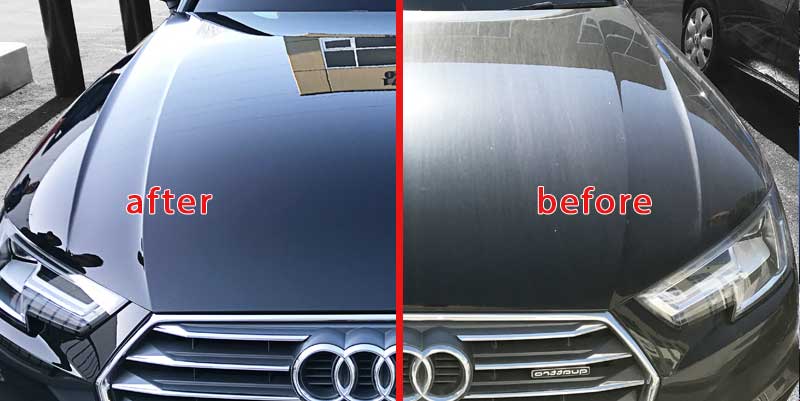Explore High-Quality Complete and Resilience with So Fresh & So Clean Detailers Ceramic Coating
Explore High-Quality Complete and Resilience with So Fresh & So Clean Detailers Ceramic Coating
Blog Article
The Science Behind Ceramic Finish: Why It's Crucial for Your Car
Recognizing the scientific research behind ceramic finish reveals its significance for car security and upkeep. As we discover the subtleties of ceramic covering, the effects for both the longevity and aesthetic quality of your lorry end up being significantly clear.
What Is Ceramic Finishing?
Ceramic finish is a sophisticated safety layer related to a vehicle's exterior, created to boost its longevity and appearance. Consisting of a fluid polymer that chemically bonds with the factory paint, this sophisticated modern technology produces a robust guard against environmental contaminants such as dirt, UV rays, bird droppings, and roadway salt. Unlike traditional wax or sealants, which may need constant reapplication, ceramic finishings supply resilient defense that can sustain for numerous years with correct upkeep.

Along with its safety qualities, ceramic layer can also contribute to the automobile's resale value by protecting the paintwork and preventing oxidation. On the whole, ceramic layer stands for a significant innovation in automotive care, providing vehicle proprietors with an efficient service for preserving their investment for several years to come.
Just How Ceramic Finishing Works
The procedure behind ceramic finishing entails a complicated interaction between the coating's molecular structure and the lorry's paint surface area. Ceramic finishes are composed primarily of silica dioxide (SiO ?) and other chemical compounds that create a durable layer of protection when used to a lorry's outside. Upon application, the coating forms a semi-permanent bond with the paint, many thanks to its nanoscale fragments that penetrate the microscopic pores of the surface.
As the layer treatments, it goes through a chain reaction that boosts its firmness and hydrophobic properties. This response solidifies the finish, efficiently developing a protective barrier that is resistant to environmental impurities such as dirt, UV rays, and chemical etching. The outcome is a surface that wards off water, causing it to bead up and roll off, hence reducing the danger of water spots and stains.
Furthermore, the level of smoothness of the ceramic layer lessens rubbing, which helps to stop scrapes and swirl marks. By adhering firmly to the paint, the finishing likewise aids in preserving the vehicle's visual allure in time, inevitably protecting its value and appearance. This complex process highlights the sophisticated innovation behind ceramic coverings, making them a superior option for automobile security.
Key Benefits of Ceramic Layer
Often considered a game-changer in car upkeep, ceramic finishing supplies countless advantages that prolong beyond plain aesthetics. One of one of the most considerable benefits is its premium security versus ecological impurities. Unlike conventional wax, ceramic finishings develop a strong chemical bond with the automobile's paint, giving a resilient barrier versus UV rays, bird droppings, tree sap, and road salt.
Furthermore, ceramic finishings have hydrophobic buildings, which means they fend off water and various other fluids. This attribute not just helps in maintaining the lorry cleaner for longer durations but likewise promotes easier washing, as dirt and crud are much less most likely to abide by the surface area.
Moreover, ceramic coatings boost the automobile's gloss and radiate, making certain that it preserves a showroom-like appearance in time - So Fresh & So Clean Detailers Ceramic Coating. The Learn More long life of ceramic finishes is an additional compelling benefit; they can last a number of years with proper upkeep, hence reducing the frequency of see this website reapplication contrasted to conventional waxes
Comparison With Typical Wax
When comparing ceramic coverings to typical wax, it's important to acknowledge the substantial distinctions in resilience and defense. Ceramic layers are engineered from advanced nanotechnology, giving a durable layer of protection that can last numerous years. In contrast, standard wax usually lasts just a few weeks to a couple of months, calling for frequent reapplication to preserve its efficiency.
The chemical make-up of ceramic coatings allows them to bond at a molecular level with the car's paint, producing a long lasting shield against environmental pollutants such as bird droppings, tree sap, and UV rays - So Fresh & So Clean Detailers Ceramic Coating. Conventional wax, while using a momentary sparkle, lacks this level of bonding, making it much more vulnerable to deterioration from severe weather condition and chemicals

Upkeep Tips for Ceramic Finishing
Ensuring the long life and effectiveness of a ceramic layer needs constant maintenance. To make best use of the benefits of your ceramic layer, routine cleaning is vital. Utilize a pH-neutral car hair shampoo and a microfiber towel or sponge to prevent damaging the surface. Laundry your vehicle every 2 weeks to avoid pollutants, such as dust and road gunk, from bonding to the layer.
In addition, take into consideration making use of a ceramic upkeep spray or booster every few months. These products improve the hydrophobic buildings of the covering and add an extra layer of protection. When drying your car, utilize a microfiber towel to stop water places.
Avoid automatic auto washes with brushes, as they can compromise the integrity of the covering. Instead, choose touchless laundries or hand cleaning methods. If your vehicle encounters tough contaminants like tree sap or bird droppings, remove them promptly to avoid damage.
Last but not least, routine examinations are critical. Seek any signs of wear or damage to the coating, and consult a specialist detailer if fixings or reapplication is needed. By adhering to these upkeep ideas, you can ensure your ceramic covering stays effective and your lorry maintains its excellent appearance.
Conclusion
In verdict, ceramic coating stands for a considerable innovation in lorry protection technology, offering a resilient and resilient obstacle against ecological pollutants. The premium benefits of ceramic finish make it a crucial financial investment for car proprietors looking for to preserve their car's look and integrity over time.
Recognizing the scientific research behind ceramic coating reveals its you could look here relevance for car defense and upkeep (So Fresh & So Clean Detailers Ceramic Coating).The procedure behind ceramic coating entails an intricate interaction between the layer's molecular framework and the lorry's paint surface area. Unlike conventional wax, ceramic coverings develop a solid chemical bond with the car's paint, supplying a durable obstacle against UV rays, bird droppings, tree sap, and road salt
Ultimately, while typical wax may be a lot more economical initially, the lasting benefits of ceramic finishings make them a premium option for car protection.

Report this page